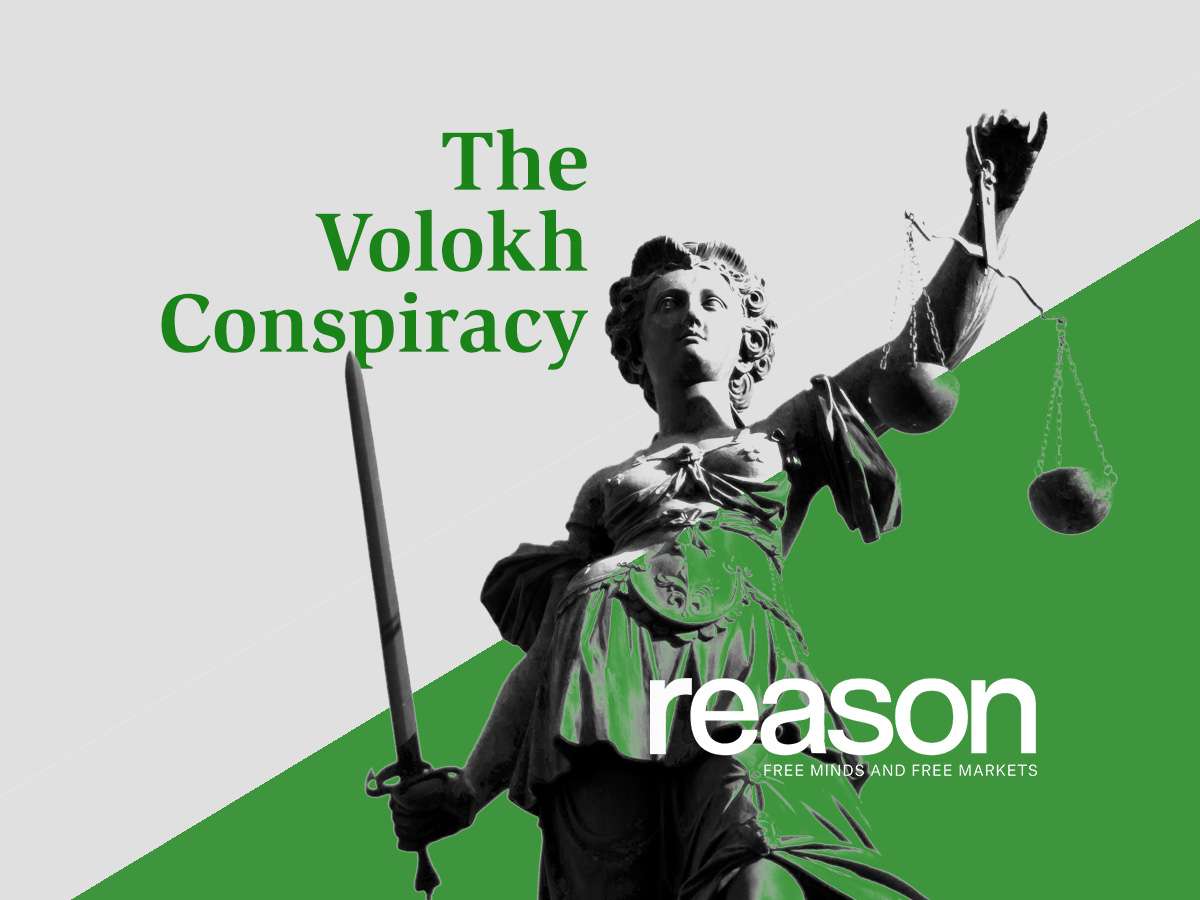Religious Charter Schools Should Pass the Supreme Court Test

On Wednesday, the United States Supreme Court will consider whether St. Isidore of Seville Catholic Virtual School will become the nation’s first religious charter school. Squaring off against the school at the high court is Oklahoma Attorney General Gentner Drummond, a law-and-order Republican, who has argued that his state’s prohibition against public aid for sectarian schools is justified to prevent “extreme sects of the Muslim faith” from using public tax dollars to teach sharia law. Proponents of educational freedom should reject such fearmongering. A ruling against St. Isidore would be a significant blow to charter schools of all stripes, particularly in underserved communities in most need of choice. The policy standing in the way of St. Isidore’s charter dates back to the discredited “Blaine amendment” movement. Named after their proponent, a 19th-century Maine politician and diplomat, Blaine laws make it illegal for public aid to go to religious organizations. Animated by anti-Catholic bias, 37 states amended their constitutions to include “no aid” provisions, with many, including Oklahoma, adopting Blaine provisions as a condition for their admission to the United States. Blaine laws have since fallen into disfavor. Oklahoma’s governor, the state’s charter school board, the state superintendent of schools, and two former Oklahoma attorneys generals have all weighed in for St. Isidore. So have several U.S. senators, led by Oklahoma’s Jay Lankford. The Trump Justice Department filed a brief in favor of the school, building on a 2020 opinion from the first Trump DOJ’s Office of Legal Counsel concluding that the exclusion of “sectarian” schools from federal charter school programs is unconstitutional. Newly confirmed Trump administration Solicitor General John Sauer will share argument time on Wednesday with the lawyers arguing for the constitutionality of faith-based charter schools. The Roberts Court, moreover, overruled state laws blocking “sectarian” organizations from participating in public benefit programs in Trinity Lutheran (2017), Espinoza (2020), and Carson (2022). It’s noteworthy that Chief Justice Roberts wrote the majority opinion in every one of these cases. Much as the chief justice long carried the anti-discrimination torch in race-based preference cases — from his clarion call in Parents Involved (2007) (“The way to stop discrimination on the basis of race is to stop discriminating on the basis of race”) to his curtain closer in Fair Admissions (2023) (“Eliminating racial discrimination means eliminating all of it”) — Roberts has been similarly insistent that religious discrimination violates the free exercise clause of the First Amendment. As Roberts wrote in Carson, which overturned Maine’s ban on the use of state-provided tuition assistance at sectarian schools, “to withhold a public benefit from students solely because they attend a religiously affiliated school is to discriminate on the basis of religion.” Withholding a public benefit from students solely because they attend a religiously affiliated charter school is no less discriminatory. While Attorney General Drummond’s efforts to recast the Blaine amendments as a bulwark against Islamic fundamentalists may score him points with hard-right primary voters in his recently announced candidacy for governor, it’s unlikely to persuade a majority of the justices to overturn their recent religious liberty precedents. Perhaps realizing this, Drummond has another tactic: namely, to end-run the free exercise clause by declaring that charter schools are “state actors,” the constitutional parlance for private parties that have a sufficiently close nexus with the government to be treated as the government itself. It’s a designation that makes a huge difference. State actors do not possess constitutional rights, such as the right to practice religion. Instead, they are bound by a range of constitutional and legal duties. Misconstruing charters as state actors distorts the entire charter school vision. In states like Oklahoma, charters’ broad latitude to implement “a specific learning philosophy” and adopt their “own personnel policies . . . and method of school governance” demonstrate they are not government surrogates. Rather, they exist to compete for students with local district schools, which is precisely why unions representing public school teachers have spent millions of dollars in places like Illinois and California trying to thwart them. If tagged as state actors, innovative and diverse charter schools across the U.S., including Oklahoma charters that focus on Native American language and culture, will operate under a constant litigation threat. Consider the fate of Charter Day School, a North Carolina charter school that specifies dress codes for its male and female students based on the school’s emphasis on “traditional values,” including a “traditional curriculum, traditional manners and traditional respect.” The dress codes, it was alleged, were a gender stereotype in violation of the equal protection clause of the 14th Amendment. Based on precedents from the First, Third, and Ninth Circuit Courts of Appeal, the school contended that the 14th Amendment did not apply because charter schools are not state actors. But after seven years of litigation, the Fourth Circuit Court of appeals ruled in 2022 that Charter Day School was a state actor. The result: The school was forced to jettison its dress codes and pay millions in legal fees. As Fourth Circuit Judge J. Harvie Wilkinson III, a judicial conservative whom a writer for National Review’s Bench Memos recently described as “perhaps the most distinguished federal appellate judge currently sitting,” put it in his stirring dissent, the state-action finding casts a cloud of uncertainty over “charter schools of all stripes,” including “single-sex charter schools,” and charters “serving underserved and dispossessed populations.” “Regardless of the constitutional merits of such challenges, the costs of litigation may well accomplish opponents’ lamentable goal of rendering such innovative and diverse programs an experiment that died aborning.” What Drummond and the liberal majority on the Fourth Circuit miss is that the true promise of charters is in the alternative system they represent — a free marketplace of independent education providers. Before charter schools, government officials ran K–12 as a monopoly, prohibiting competition and regulating the same schools they operated. The legacy model, which still persists in many traditional school districts, is resistant to change and fraught with conflicts of interest. In the charter model, government plays a limited but essential role: funding school choice for parents and setting conditions for fair competition, such as information symmetry (standardized test scores) and access to services (universal enrollment and expulsion procedures). Consider New Orleans, where nearly all public schools are charters. The state facilitates universal, tuition-free education, but until recently, it did not manage a single school. Families use public dollars to enroll at private nonprofit charters, which in turn comply with baseline education statutes. These charters are no more agents of the state than are the private doctors whom Louisiana reimburses through Medicaid to provide free health care. Nearly $50 billion in public funding goes to Catholic hospitals nationwide each year for such services. If charters are state actors, faith-based hospitals, foster care agencies, food banks, and special-educational institutions that provide services to dispossessed communities will all have to lawyer up. As then–Third Circuit Judge Samuel Alito observed, for private schools — even publicly funded and highly regulated ones — to qualify as state actors, the government must be able to “compel their conduct.” Subjecting charters to such control confuses their role and would paralyze their potential. As in most sectors, the government has no special expertise in how to teach children. To improve, charters require the flexibility to innovate. That autonomy lets charters compete: Those with the best curriculum, culture, and staff attract more families and expand; those that underperform lose enrollment and close. The market self-corrects over time. Contrast that with traditional district schools — actual state actors with publicly elected school boards — which perennially underperform but, as government entities, never shut down. Shielding government-run schools from market forces does not magically fix their failure — it shovels that failure onto generation after generation of kids, who bear the cost for life. Oklahoma Statewide Charter School Board v. Drummond, consolidated with St. Isidore of Seville Catholic Virtual School v. Drummond, will determine whether American education becomes more or less centralized, homogeneous, and anticompetitive. Only as independent operators, not state actors saddled with government bureaucracy, will charters and educational entrepreneurs transform the K–12 ecosystem. Natural selection among charters is why they consistently produce better academic outcomes, particularly for low-income students. Families are voting with their feet. The number of charter students doubled from 2011 to 2021 and now reaches 4 million. The justices need to protect this successful educational experiment from latter-day Blaines who cannot tolerate pluralism. Michael Toth is a resident fellow at the Foundation for Research on Equal Opportunity (FREOPP) and a research fellow at the University of Texas at Austin Civitas Institute. Gavin Schiffres is a research fellow at FREOPP and the founder of Kairos Academies, a charter school network.



















